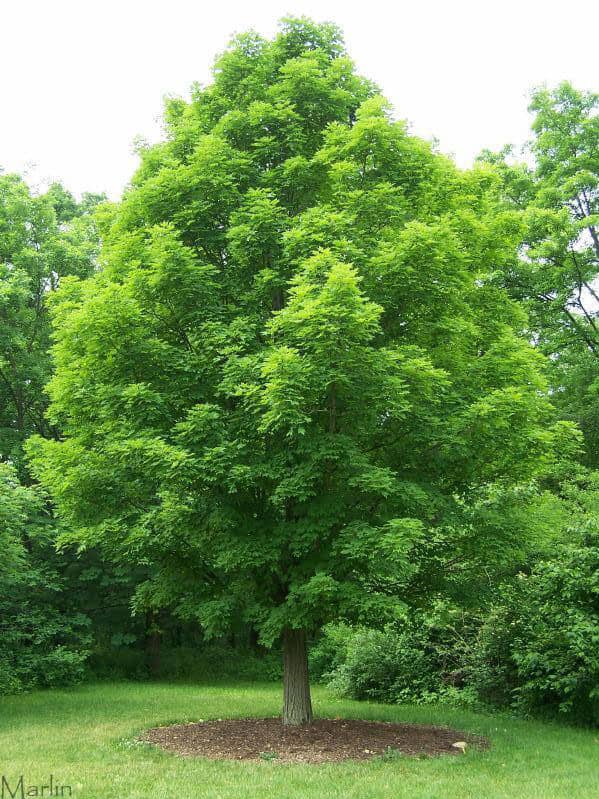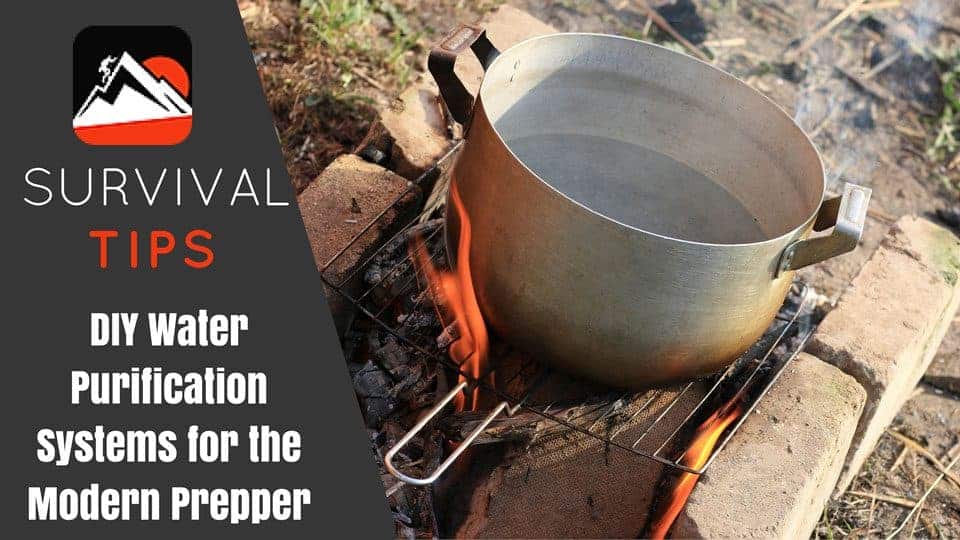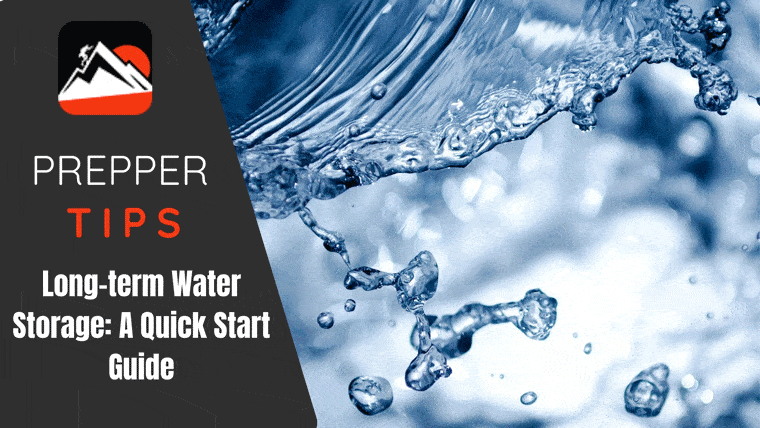Contents
Have you ever been stuck in the middle of nowhere with no water to drink? It’s not a pretty feeling. You start to feel weak and dizzy, and before you know it, you’re on the ground. Dehydration is no joke. But what if I told you that there’s a way to get water from trees, even if you’re stranded in the middle of the desert? It may sound crazy, but it’s true! Read on to find out which trees are best for getting water from and how to do it. Trust me, knowing this information could save your life one day.
Tree Species Are Ideal For Getting Water From
1) Maple Trees:
These trees are a great source of water. They have a high sugar content, which means that they release more water when tapped. To tap a maple tree, drill a small hole in the trunk and insert a spout. Collect the sap as it drips out. It’s best to collect at least five gallons of sap for every inch of diameter on your spout. You can also use your collected sap for other things like syrup or alcohol production.

You might also find interesting our article about finding water in the wild.
2) Birch Trees:
Birch trees are another good option for tapping. They have a high sap content, so you’ll get a lot of water from them. However, birch sap is not safe to drink on its own. It contains a chemical called methyl hydroxyethylcellulose, which can cause stomach upset if consumed in large quantities. To make birch sap safe to drink, boil it for at least 10 minutes before drinking. However, birch syrup is a common treat for many people. It can also be used in cooking or even medicine!

3) Sycamore:
Sycamore trees are great for water collection. Their trunks are very smooth, making drilling a hole into them easy. They also have high sugar content, so they will produce a lot of sap when tapped. However, they don’t have as much sugar as maples or birches, so you’ll need more sycamores than other trees for every gallon of sap you want.

4) Walnuts:
Walnuts are a good water source, but they’re not as easy to tap as other trees. That’s because their trunks are covered in a thick layer of bark. You’ll need to make a small cut in the bark to get to the sapwood beneath. Once you’ve tapped into the sapwood, you can collect the sap as it drips out.

We also recommend reading our article about how to desalinate water for survival.
5) Hickories:
Hickories are another good source of water. They have a high sap content, so you’ll get a lot of water from them. However, like birch sap, hickory sap is not safe to drink on its own. It contains a chemical called lignin, which can cause stomach upset if consumed in large quantities. To make hickory sap safe to drink, boil it for at least 10 minutes before drinking.

6) Boxelder Trees:
These trees are a good source of water. They have high sugar content, so they will produce a lot of sap when tapped. However, their trunks are very hard, so drilling into them is difficult. You’ll need first to remove their bark using an ax or saw to tap these trees. You can then use your spout as normal.

Best times of the year to get water from trees:
Depending on where you live, there may be a preferred time of year that’s best for tapping trees. In regions with a lot of rainfall, it may be best to wait until after spring showers have replenished groundwater levels before tapping them. But in areas with higher temperatures or drier climates, tree-watering could be done year-round. In dry regions, you should also take into account how many trees there are for every person so as not to diminish an already-depleted resource. For example, if one acre of land has 100 trees on it and 10 people living nearby, each person would only be able to use 10% of those trees, so no one individual can drain all available resources.
The first step is determining which tree species will work best for your location and situation. Ideally, you’ll want a deciduous tree that has a large canopy that allows plenty of sunlight through its leaves (this way, there’s enough water available during dry seasons). You should also consider what kind of topography you have; if you live in an area with sandy soil or a lot of rocks, it may be harder to dig around roots. Once you’ve chosen your tree, the next step is to determine where you will tap it. The best place to tap a tree is about 2/3 of the way up from the ground on the side that gets the most sun exposure; this way, more sap will flow from the tap.
How To Get Water From Trees?
1) Using a spile:
The most common way to tap a tree is by drilling a small hole into the trunk and inserting a spile (metal or plastic tube) to collect the sap as it flows out. You can buy spiles at most hardware stores or make your own out of metal or PVC piping.
Steps:
- Start by drilling a pilot hole into the tree trunk. The size of the hole will depend on the size of your spile. For a ¼-inch spile, you’ll need a 5/16-inch hole.
- Next, insert your spile into the hole and hammer it in until it’s snug.
- Finally, hang a bucket or other container from the spile to catch the sap as it flows out.
- You can also use a hose to direct the sap into another container if you don’t want to use a bucket.
Tools Needed:
- Drill
- Spile
- Hammer
- Bucket or container
- Hose (optional)
2) By Condensation:
Another way to get water from trees is by condensation. This method is best used in conjunction with the spile method, as it will help you to collect more water. To collect water by condensation, you’ll need to wrap a cloth around the spile and cover it with a bucket or container. The cloth will absorb the water vapor that’s released from the sap, and the bucket will collect the condensed water.
Steps:
- Wrap a cloth around the spile, making sure that it’s snug.
- Place a bucket or container over the cloth-covered spile.
- Leave the setup overnight or for at least 12 hours.
- Remove the bucket or container, and wring out the cloth into the container.
- Repeat as necessary.
Tools Needed:
- Cloth
- Bucket or container
Nutrition You Can Get From Tree Water:
In addition to being a source of freshwater, tree sap can also provide you with nutrients. Some of the nutrients that you can get from tree sap include:
- Amino acids
- Minerals (such as calcium, potassium, and magnesium)
- Vitamins (such as vitamin C)
- Enzymes
- Sugars
- Proteins
While tree sap is not a complete source of nutrition, it can provide you with essential nutrients that your body needs. If you’re drinking tree sap regularly, it’s important to supplement your diet with other sources of nutrition as well.
Precautions:
Before drinking tree sap, it’s important to take some precautions to ensure that the sap is safe to consume. Here are a few things to keep in mind:
- Make sure you know what kind of tree you’re tapping, as some trees (such as maples) produce sap that is not safe for human consumption.
- If you’re using a spile to tap the tree, make sure that it’s made of food-grade materials.
- It’s also important to sterilize the spile before use, as this will help prevent bacteria’s growth.
- If you’re using the condensation method to collect water, make sure that the cloth you’re using is clean.
- Finally, it’s important to boil tree sap before drinking it, as this will help to kill any bacteria that may be present.
FAQs:
Can you survive off of tree sap?
Tree sap is a great source of nutrients and can provide you with all the necessary vitamins and minerals that your body needs, but it cannot digest food properly. It also contains plenty of enzymes that help break down carbohydrates in plants, so they’re easier for us humans who eat them!
Can you tap any tree?
No, you cannot tap just any tree. The best trees for tapping are maples, birches, walnuts, and sycamores. Furthermore, the tree must be at least 10 years old and should be no taller than 30 feet.
How do you make a spile?
You can make a spile by carving an X into a tree and ensuring it is hollow. Then, take a long piece of bamboo or long twig. Drill two holes in it, just large enough for your lips. Carve them at an angle, like horns pointing upwards or downwards. You need these as air vents, so you don’t suffocate from swallowing sap when drinking from your homemade water spout. Make sure that both air holes are angled towards each other. Once you have carved out your spile, drill one hole in a nearby tree with a drill bit that matches up with the size of your spile (don’t use too big of a drill bit). If there isn’t another tree close by, make one! Put one end of your spile into one hole and let it drip down until it reaches another hole drilled near ground level on another nearby tree. Drink through that hole!
Conclusion
It’s clear that you can get water from trees if you know what type of tree species to choose. Each tree species has their own unique benefits, and with proper care, it can be used to provide clean drinking water and keep your lawn looking green. When looking for a new tree for your lawn or home, keep in mind that some trees are better suited for water extraction than others. If you have any questions or concerns, be sure to ask a professional before planting or tapping a tree. With the right tools and knowledge, you can get water from trees and ensure that your family has a reliable source of freshwater.




